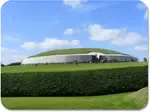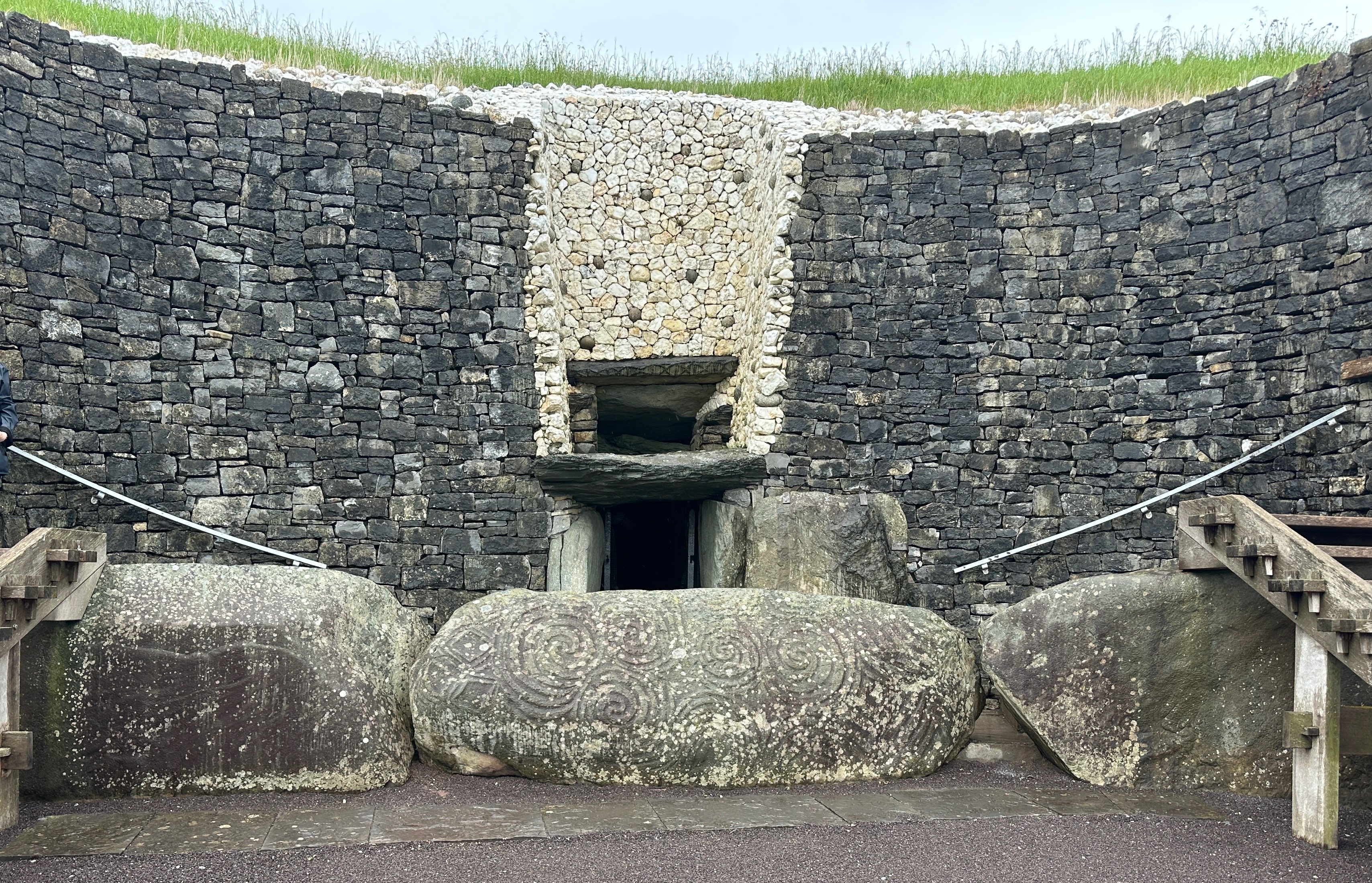- Home
- Ireland Sightseeing
- Detailed Maps of Ireland
Detailed Maps of Ireland:
Here is the Fastest, Funnest Way to Get to Know the Emerald Isle!
Ok fine, 'funnest' isn't an actual word but whatever... Here are our favorite detailed maps of Ireland, showing the home of the Blarney Stone, Lord
of the Dance, James Joyce, Leprechauns and Guinness Stout.
We All Have a Unique and Personal "Irish Side."
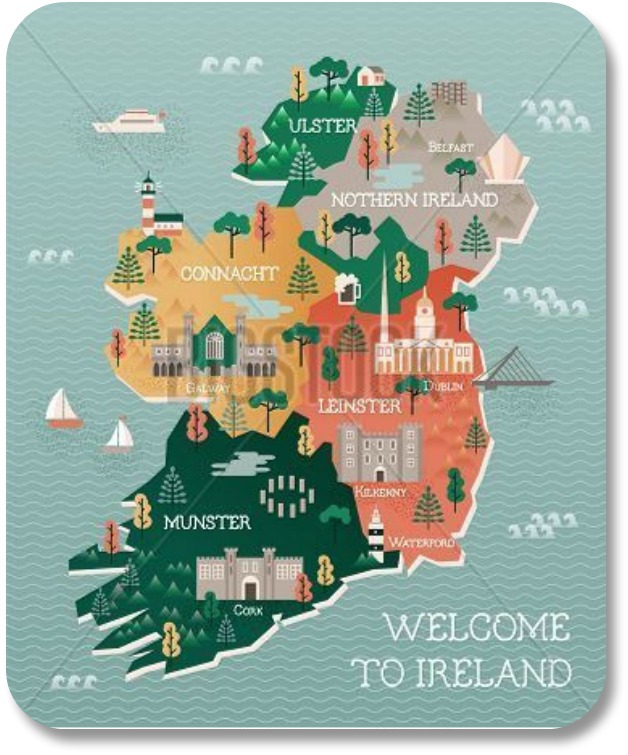
A basic understanding of Ireland's provinces, counties, cities and attractions can be a huge help in discovering your own Irish side!
So let's take a closer look these detailed Ireland maps. The first thing you will notice is the Emerald Isle is divided into four provinces (plus Northern Ireland).
Detailed Maps of Ireland: Connacht Province
It's on the western side of the island, and it is the smallest province on the detailed maps of Ireland.
The primary counties in the province include Galway and Sligo Counties, both of which also are home to the largest cities in the province.
The entire county only has a population of just over 540,000 people, but it is home to one of Ireland’s most amazing natural sites: the Killary Harbor, the one natural fjord in Ireland.
Connacht is home to the largest island on the Ireland map, Achill, and it is also home to Lough Corrib.
The western part of the country is very rugged and decidedly inhospitable to crops - and for the most part, people as well.
The upside to the rugged terrain is that it is incredibly picturesque, with some of the most popular mountains in the country.
The Connemara National Park are at home in this province, as are the Aran Islands with their ancient forts.
These forts, such as the Dun Aonghasa, are one of the most popular tourist destinations in Ireland.
The city of Galway is found in Connacht Province, and its population of over 75,000 makes it the largest city in the county.
The city began as a fort built in the 1100s, and has expanded into one of the largest cities in Ireland.
Connacht has had many battles fought over its territory, such as The Battle of Claenloch in 538 and the Battle of Cuil Conaire in 550.
The Vikings raided and inhabited Connacht for many years, and Galway was the location of the Siege of Galway during the Williamite War.
The Battle of Aughrim also took place in Connacht in 1691.
Detailed Maps of Ireland: Leinster Province
This area is found on the eastern side of the detailed maps of Ireland, and this province has over 2 million inhabitants.
The capital of the country, Dublin, is located in Leinster, along with some of the primary counties like Kildare, Kilkenny, and Carlow.
The county was actually divided into two at one time - Leinster and Pale - but become one after the Norman Invasion of Ireland.
The weather of Leinster is fairly pleasant for much of the year, and the main city of Dublin actually gets less rainfall than the rest of the country.
The climate of Dublin maritime without extreme temperatures, and the entire county is usually subjected to mild climates without temperature extremes.
In certain parts of the province, notably Kilkenny, the primary language is English, with Irish being the language spoken most commonly after English.
The metropolitan area of Dublin is home to over 1.8 million people. Most of the other counties and cities on the Ireland map have a fairly small pollution when compared to the capital city.
Dublin began as a Viking settlement, and it was controlled by the British until the Normans invaded Ireland. The province was actually a good deal smaller historically than it is today.
The the kingdom was first formed by Ugaine Mor (Hugony the Great), who united the tribes of Leinster.
Drogheda was an important part of the War of the Roses, and it is the place where the Earl of Worcester ordered the Earl of Desmond executed along with his two sons.
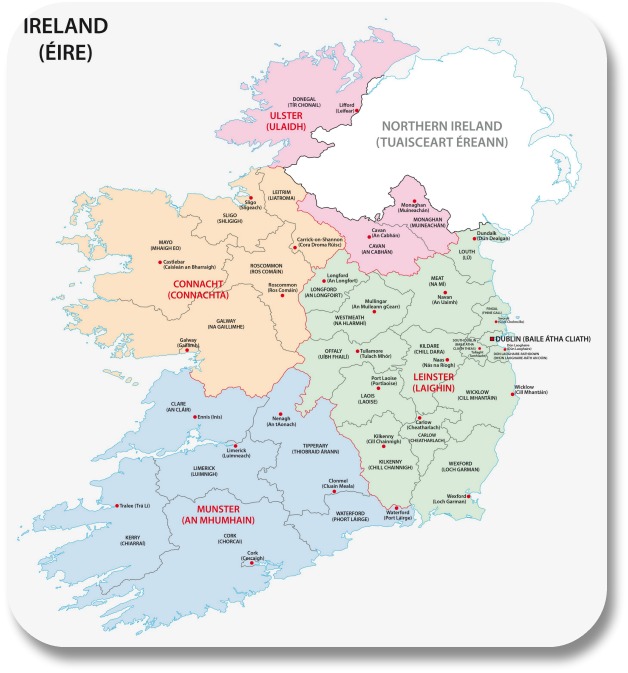
Detailed Maps of Ireland: Munster Province
This Province is in the south of the detailed maps of Ireland, and it covers nearly 25 thousand square meters with a population of over 1.2 million people.
Its primary counties include Cork, Limerick, and Waterford, with Cork being the most populated city in the province.
Munster was once home to the Iverni tribes, including Clanna Dedad. The county was divided into three kingdoms, hence the three crowns on the flag of Munster.
Daniel O’Connell and Michael Collins both hail from Munster, and this area is incredibly famous for its Irish music.
Munster is also famous for its sports, and it is the place where hurling and other Gaelic games were created.
The region is also home to a number of monasteries and castles, making it one of the most popular tourist destinations on the Island.
The Blarney Stone is at home in Munster Province, in the Blarney Castle a few miles from the city of Cork.
Cork County is called by outsiders the Rebel County of Ireland, while the residents of Cork call it the real capital of Ireland.
The book Angela’s Ashes by Frank McCourt was written about the city of Limerick, and bands like The Cranberries and The Hitchers come from this county.
The climate of the region is colder than much of the country, with a very high average yearly rainfall. Cork is one of the colder cities, with Limerick’s climate being much more temperate.
Cork is famous for its fog, while Limerick is famous for its amazing clouds. It has only 1,273 hours of sunshine per year, and up to 62 days on average without any sun.
Detailed Maps of Ireland: Ulster Province
Last but not least, Ulster Province occupies the northern part of the detailed maps of Ireland, and this is where the independent state known as Northern Ireland is located.
The capital city of Belfast is located here, along with other primary cities like Derry and Bangor.
The main counties are Antrim, where Belfast is located, Down, and Londonderry. The population of Ulster is just over 2 million.
Ulster was once ruled by powerful Irish clans, and they were the only province in Ireland that was not under British control by the end of the 14th century.
Ulster only fell to the English forces in the Nine Years War in the 1600s, and they held their position as the last bastion of Gaelic culture in Ireland until that time.
The climate of Ulster is fairly temperate, as is the rest of the island. The temperature stays fairly constant, though the rainfall is fairly high and the conditions are generally windy.
Bangor, one of the primary cities in Ulster, was once home to a number of monasteries, and it was considered a place of prayer, learning, and religion.
Derry played a major role in the Irish Rebellion in 1641. General Eisenhower visited Bangor during World War II to address the troops leaving to participate in the landings that came to be known as D-Day.
Want More Irish Landmarks?
Taking a virtual tour of beautiful Irish landmarks is one of our favorite ways to enjoy an Irish experience, wherever in the world we happen to be!
The popularity of Irish sights is the reason why one of our most popular ebooks is called "Favorite Sights to See in Ireland."
That book is just one chapter in a downloadable, share-able collection of Irish games, puzzles, recipes, songbooks, quizzes, travel guides and more - that we have collected for you over the years.
Want them right now? Keep reading to learn about "Your Irish Expressions Playbook."
More Fun With Irish Expressions:
Your Irish Expressions Playbook
Congratulations on learning more about the Emerald Isle and discovering what we like to call your "Irish Side." You may be thinking "I'd love to actually VISIT Ireland but that's really not in the cards right now. What am I supposed to do with the stuff I just learned?"
Well never fear! Since 2007 we have collected all of the best printable, shareable resources we could find, to help you put your new knowledge of Ireland to good use. We've put them all together in a single download we call "Your Irish Expressions Playbook," which contains over 100 pages of games, puzzles, recipes, songbooks, quizzes, travel guides and much, much more.

Purchase them ALL for one small price, print as many copies as you like and share them with your friends - with no limitations! But order soon - we are already adding to the Playbook for future editions and this price will not last long.
Oh, want one more reason to order right away? If you buy YOUR copy of the Playbook now, you will be allowed to upgrade to any new future edition for FREE.
PRO TIP: Be sure to click the 'return to merchant' button following checkout, to ensure you are routed to the page where you can download your Playbook. Any issues? Just reach out to us at support@irish-expressions.com and we will make it right.
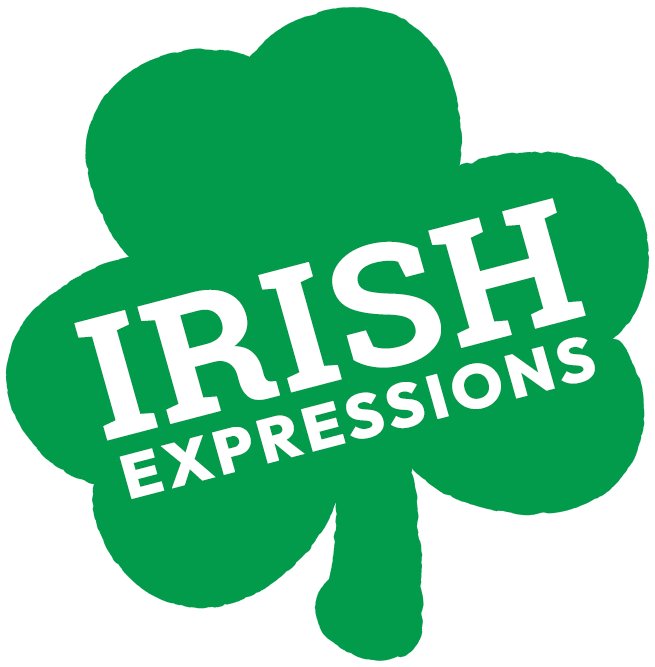
Please Share Your Feedback
Did we miss anything? Is there a topic you would like us to cover in the future? Tap HERE to let us know!
